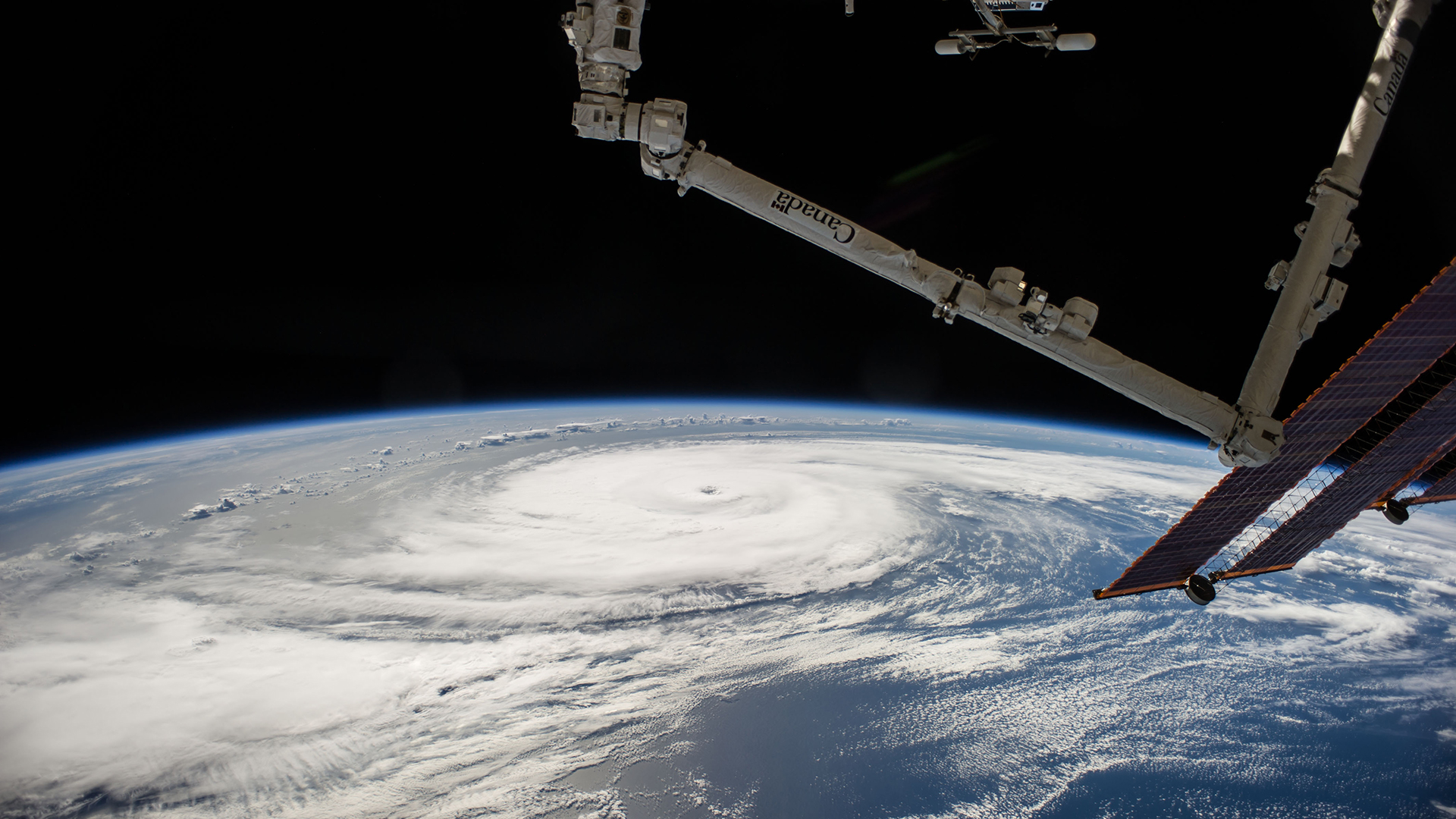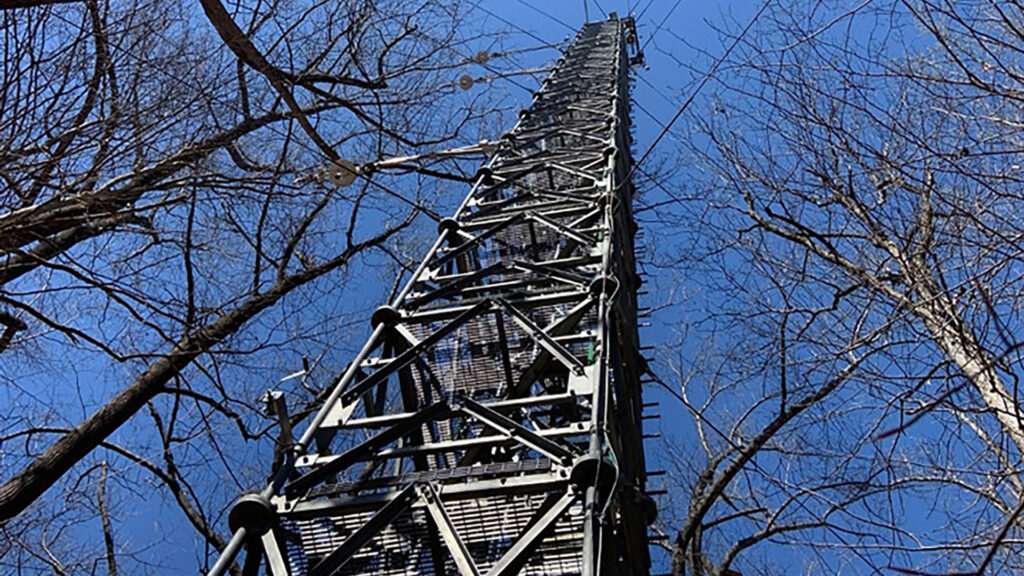
No Wi-Fi in space … yet
Paul Grogan receives NASA grant to connect satellites, sensors and sea vehicles

A tropical storm swirls and builds off the coast of Miami. Extraordinary California wildfires leave burn scars on the landscape, creating the potential for dangerous mud and debris slides. And human activity continues to change the planet, raising temperatures and causing extreme weather events.
Meanwhile, more than 8,000 satellites in space, thousands of sensors on ground stations and hundreds of underwater vehicles are hard at work, collecting vital information that could help us organize responses to emergency events, prevent disasters and better understand our planet.
But these devices aren’t talking to one another.
The challenge today is twofold. First, current vehicles and tools are typically set up to communicate solely with control stations on the ground. Second, solving that problem will require the development of new technology to ensure that as new vehicles and tools are built, they are able to collect and share the right kinds of data.
Now, Paul Grogan has been awarded a grant of more than $1 million from NASA to develop such solutions. Grogan is an associate professor of computer science and industrial engineering in the School of Computing and Augmented Intelligence, part of the Ira A. Fulton Schools of Engineering at Arizona State University. Much of his work focuses on creating information systems to assist with Earth-observing space missions.
“So, of course, on Earth, we have the internet, which is the backbone for all kinds of information exchange,” Grogan says. “That similar capability does not exist currently for these different types of Earth-observing assets.”
Working under the supervision of the Earth Science Division, a branch of NASA devoted to collecting critical planetary data and using that information to improve human life, Grogan is developing a Novel Observing Strategies Testbed, or NOS-T, that will create a sort of Earth science Wi-Fi system that connects satellites, sensors and sea vehicles.
In the right place at the right time
The need to study major storms and provide crucial safety information to the public typifies the nature of the problem that Grogan is working to solve.
Above the Atlantic Ocean, constellations of satellites whizz overhead, underwater vehicles cruise around the coastline, and sensors on rivers and buildings are collecting valuable information. But all these various tools communicate independently with control stations via an uplink process. As a storm is developing, there is no way to put all the tools in the right places to collect the right data and share it with the right people.
“Earth-observing assets exist in relative isolation,” Grogan explains. “The problem right now is that we are gathering a lot of data but it’s being packaged away in little information silos.”
To tackle these challenges, the NOS-T project has two parts.
One part involves Grogan and his team creating a computational test bed.
Much in the way that, here on Earth, engineers had to make hardware like routers and modems, create standards for network architecture and design programming languages to power the internet we rely on, Grogan is envisioning a future, five to 10 years from now, when these types of communication capabilities exist for Earth-observing assets. He is making determinations about what is needed to make that vision a reality.
The testbed is a prototype computer environment designed to mimic how the final system will operate. It will answer critical questions: What kinds of data will scientists want access to? What type of logic systems are required for assets like satellites and metrological sensors to be able to collect that information? What types of application programming interfaces will software engineers need to gain access and use the data?
Grogan is working with teams of scientists around the country who will use his testing environment to run demonstrations for their current research, providing insights on how NOS-T can best operate. Planned collaborations include pilot projects to study wildfire detection, volcanic activity, algae blooms in coastal regions and seasonal snowpacks.

The Smithsonian Environmental Research Center flux tower in Edgewater, Maryland, is equipped with instruments that measure light and carbon dioxide to study how to help keep deciduous forests healthy. In the future, assets like these will have access to a common communications network. Photo courtesy of NASA
There’s no unplugging the satellite
Next, Grogan and his team will use the principles of industrial engineering to address the challenges of ensuring that Earth-observing assets can operate cooperatively.
This element is especially important as industrial engineering is a discipline that deals with how hardware and software function together. Grogan notes that solving issues with satellite scheduling — the process of making sure the asset is observing the correct phenomenon and able to share its data — must deal with both components.
“Currently, operators on the ground handle satellite scheduling,” Grogan says. “Satellite operations tend to be very conservative. On Earth, if your operating system crashes, you just unplug the computer, plug it back in and reboot it. But a satellite is orbiting 300 miles above us, making that impossible.”
For a communications network of Earth-observing assets to be functional, vehicles must be able to receive complex instructions without malfunctioning. Grogan says he believes that artificial intelligence solutions will likely be created to effectively deal with such challenges.
Real research for real results
The end goal is to empower researchers to go beyond collecting data and enable them to quickly understand it and act on what it reveals.
Ross Maciejewski, director of the School of Computing and Augmented Intelligence, says Grogan’s work is an ideal example of the types of research projects the school is eager to foster.
“The grant demonstrates the important contributions that Grogan and the school are making in the space domain,” Maciejewski says. “It also shows the way in which computer engineering and industrial engineering are working in tandem here to generate impactful research that will help us better understand the planet we call home.”



































